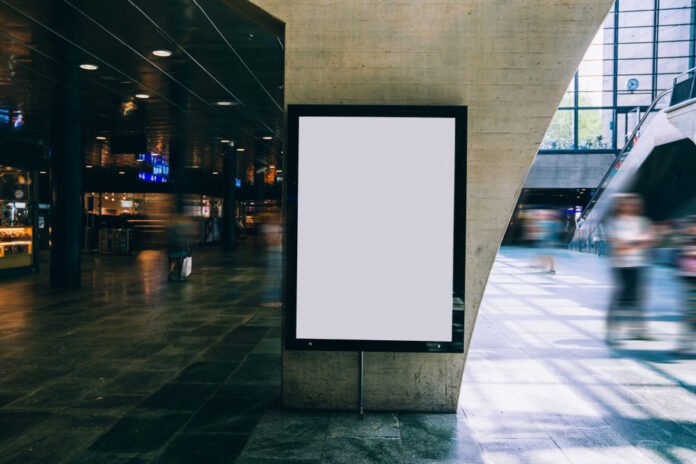Ever wondered what creates the first contact between an art exhibit and its audience? How can an art show transform from a mere display of creativity into an intriguing journey of aesthetic appeal and narrative immersion? Has the role of display boards in an art exhibition ever piqued your curiosity?
Display boards within an art exhibit serve not only as platforms to showcase artistic creations but are manifested storytellers that can transform the audience’s experience. Join us as we delve into the whys and hows of establishing an engaging visual narrative using art show display boards, interpreting their influence, and appreciating their significance in the broader context of art appreciation.
Before we plunge into the details, let’s first understand that display boards contribute to the overall energy, mood, and ambiance of an art exhibition. They can either enliven or mute the visual narrative based on their design, format, and strategic positioning. This blog will shed light on the nuances of crafting compelling visual narratives through art show display boards, highlighting their potential to impact and transform the audience’s journey within the exhibit.
Table of Contents
Understanding the Role of Display Boards in Art Exhibitions
Display boards are more than functional elements; they are integral participants in narrating the story of an art exhibition. They can amplify the impact of the showcased pieces, creating a holistic, immersive sensory experience. Essentially, display boards bear the dual responsibility of enhancing the aesthetics and channeling the narrative in a precise, thoughtful manner.
Subsequent to setting the stage, display boards provide a unique platform for artists to express their narratives visually. A well-designed board can articulate the essence of an artist’s work, seamlessly connecting disparate art pieces and threading them into a cohesive story.
Lastly, display boards influence audience reception and perception of exhibit pieces by controlling focus, guiding movement, and suggesting interpretation. A carefully planned display board can significantly enhance the viewers’ interpretive journey, evoking emotional responses and fostering deep connections with the art pieces.
Critical Factors in Display Board Design
A multitude of factors come into play while designing display boards. These encompass materials, colors, lighting, and positioning, to name a few. The careful selection and harmonious blending of these elements can greatly contribute to the creation of an appealing visual narrative.
The role of materials used in display boards cannot be overstressed. They must complement and amplify the art pieces they will highlight while providing a smooth backdrop for the visual narrative. The color, texture, and quality of the materials play key roles in creating conducive visual pathways for visitors to follow.
Next, the color scheme of display boards is pivotal for setting the ambiance and mood of the exhibition. To illustrate, warm colors may conjure feelings of comfort and happiness while cool colors could evoke a sense of serenity or melancholy.
Moreover, lighting is crucial in establishing focus and highlighting details. The right light can accentuate the strength of an art piece or immerse it in mystery, depending upon the exhibit’s desired narrative.
Lastly, the positioning of display boards defines visitor movement, guiding them through a series of visual and emotional experiences. When executed correctly, these boards can optimize viewer engagement and boost an exhibition’s overall impact.
Fostering Audience Engagement with Display Boards
Display boards can skillfully engage audiences by giving them a vibrant and meaningful pathway to follow. When the design and organization of these boards resonate with the displayed art and the intended narrative, they invite viewers to engage, explore, and reflect.
Interactive boards are increasingly popular means of fostering audience engagement. They may contain QR codes leading to artist interviews, behind-the-scenes footage, or detailed analyses of the artwork, enriching viewers’ experiences.
In addition, incorporating diverse formats of display boards — from floor standing to mounted styles — can create dynamic visual landscapes that stimulate interest and exploration.
Lastly, by presenting the narrative in a non-linear, exploratory way, display boards can turn art appreciation into an adventurous journey, increasing the time spent by visitors and deepening their connection with the artwork.
Challenges and Solutions in Display Board Design
Despite their potential, display boards can pose challenges. An overcrowded or disorganized board can confuse viewers, detracting from the narrative. Conversely, an overly simplistic design might fail to capture the depth and vitality of the displayed pieces.
To counter these obstacles, a balanced approach is essential. Incorporating blank spaces allows artwork to breathe and prevents visual fatigue in viewers. Meanwhile, thoughtfully displayed information about the artwork gives context and promotes understanding.
Lastly, timely feedback from visitors allows for continuous refinement and customization of display board designs, ensuring they remain engaging and relevant.
The Future of Display Boards
The future of display boards is exciting, with technology offering endless opportunities for enhancement. From interactive touchscreens to augmented reality overlays, the potential to craft engaging visual narratives is immense. But irrespective of technology, the heart of display boards remains the same – a canvas to weave stories around art.
In conclusion, display boards form the unspoken backbone of many art exhibitions, serving as catalysts that streamline the dialogue between artists and viewers. They are not merely accessories but significant contributors to an exhibition’s success, resonating with viewers at psychological and emotional levels.
Art show Display boards carry the potential to channel visual narratives effectively, creating engaging interpretive pathways that transform the typical viewing experience into a memorable journey of art appreciation. By cultivating a deep understanding of display boards’ design, aesthetics, and functionality, we can significantly enhance the visual narrative of art exhibitions, fostering engaging dialogues between artists, art, and audiences.








